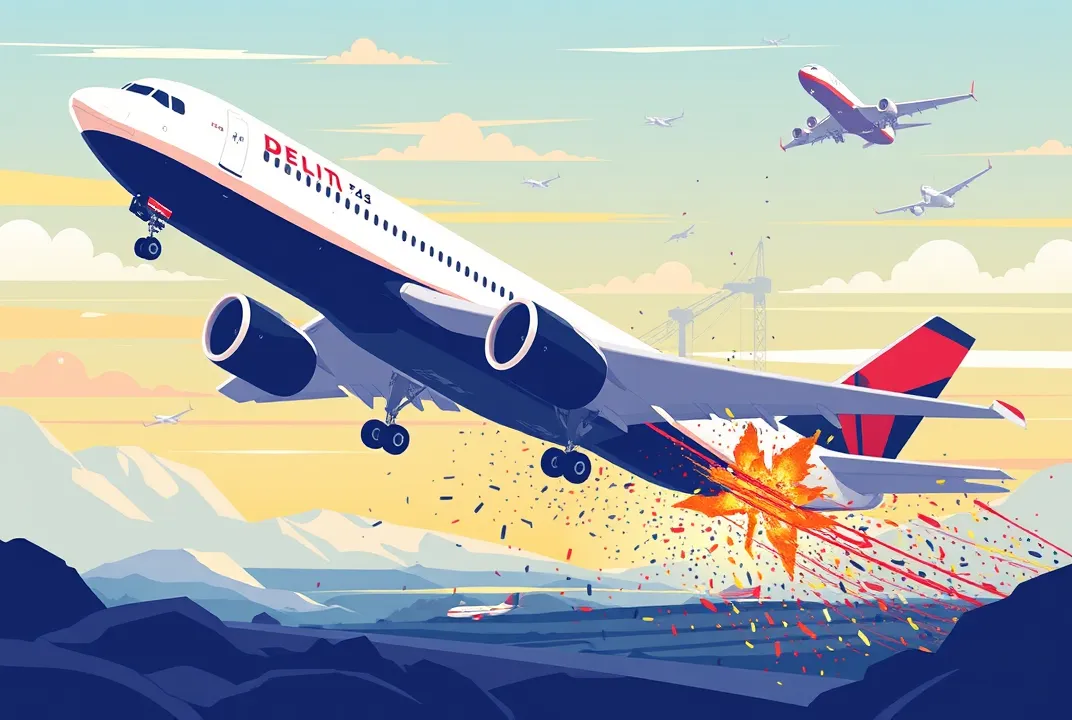The Scene of Tragedy: Details of the Alaska Plane Crash
In the early morning hours of a crisp Alaskan day, a routine flight turned into a tragic event that would shake a community and leave many questions in its wake. On [insert date of crash], a small aircraft, operated by a local airline, met with disaster shortly after takeoff from [insert airport name]. Eyewitness accounts flooded social media, describing a scene of confusion and horror as emergency services rushed to the site, marking yet another incident in the annals of aviation history.
The Flight and the Victims
The flight in question was a scheduled commuter service, ferrying passengers to [insert destination]. Among those aboard were a diverse group of individuals—from a family visiting relatives to business travelers on the verge of important meetings. The names of the victims have since been released, revealing the human stories behind the statistics: [briefly mention some of the victims with a focus on their backgrounds and personal stories].
Eyewitness Accounts
As news of the crash spread, eyewitnesses began to share their experiences. “I saw the plane take off, and then there was a sudden stall,” said [insert name, if available], who was present at the airport that morning. “It just didn’t seem right.” Such accounts provide a haunting glimpse into the moments leading up to the disaster, with many witnesses left grappling with the shock of what they witnessed.
Investigating the Cause
In the wake of the crash, investigators from [insert relevant agencies, e.g., the National Transportation Safety Board (NTSB)] began their inquiry into what went wrong. Initial reports suggest [insert preliminary findings or theories regarding mechanical failure, weather conditions, or human error]. As time progresses, more details will emerge, but the urgency of understanding the cause cannot be overstated, especially given the increasing focus on aviation safety.
The Role of Weather
Alaska's weather can be unpredictable, particularly in the spring months. Reports indicate that conditions were [insert weather conditions], which could have contributed to the flight's difficulties. Pilots are trained to assess and adapt to changing weather conditions, but even seasoned aviators can find themselves in precarious situations.
Mechanical Factors
Moreover, the aircraft model involved has been under scrutiny in the past for [insert any known issues or maintenance records]. The investigation will delve into the plane’s maintenance history and whether all safety protocols were followed prior to this ill-fated flight.
community response
The local community has rallied in response to the tragedy. Vigils have been held in memory of the victims, with residents coming together to support the families affected. “We are all heartbroken,” said [insert name, a local community leader]. “This incident has touched us all deeply. We will do everything we can to support those who are grieving.”
Fundraising Efforts
In the following days, fundraising efforts have emerged to assist the families impacted by the crash. Community members have organized [insert details of fundraisers or charitable events], aiming to provide financial relief during this harrowing time. The outpouring of solidarity serves as a reminder of the strength of community in the face of adversity.
Implications for aviation safety
As investigations continue, many are left wondering about the broader implications of this incident on aviation safety. In recent years, aviation has made significant strides in safety protocols and technology, yet accidents still occur, highlighting the industry's inherent risks.
Calls for Enhanced Regulations
In response to the tragedy, voices from various sectors are calling for enhanced regulations and oversight in the aviation industry. Experts argue that [insert expert opinions regarding necessary changes in policy or practice], underscoring the need for continual reassessment of safety standards to prevent future tragedies.
Conclusion: A Community in Mourning
The Alaska plane crash is a stark reminder of the fragility of life and the risks associated with air travel. As the investigation unfolds, the community mourns the loss of their loved ones. Each story is a testament to the lives lost and the dreams unfulfilled, woven into the collective memory of a town united in grief.
This tragedy also presents an opportunity to reflect on air travel safety, prompting necessary conversations about the measures required to ensure that such a heartbreaking event does not occur again. As the focus shifts from remembrance to action, we are left with the hope that through adversity, lessons will be learned, and change will come—ensuring that the skies above remain safe for all who travel within them.


 Delta Plane Crash: Investigating the Causes and Ensuring Future Air Safety
Delta Plane Crash: Investigating the Causes and Ensuring Future Air Safety
 The F-35 Crash in Alaska: Unraveling the Mysteries Behind the Incident
The F-35 Crash in Alaska: Unraveling the Mysteries Behind the Incident
 Unraveling the Santa Cruz Wharf Collapse: What Happened and What's Next?
Unraveling the Santa Cruz Wharf Collapse: What Happened and What's Next?
 Unlocking Life's Full Potential: The Surprising Benefits of Regular Exercise
Unlocking Life's Full Potential: The Surprising Benefits of Regular Exercise
 Unraveling the Mega Millions: Strategies to Boost Your Odds of Winning
Unraveling the Mega Millions: Strategies to Boost Your Odds of Winning